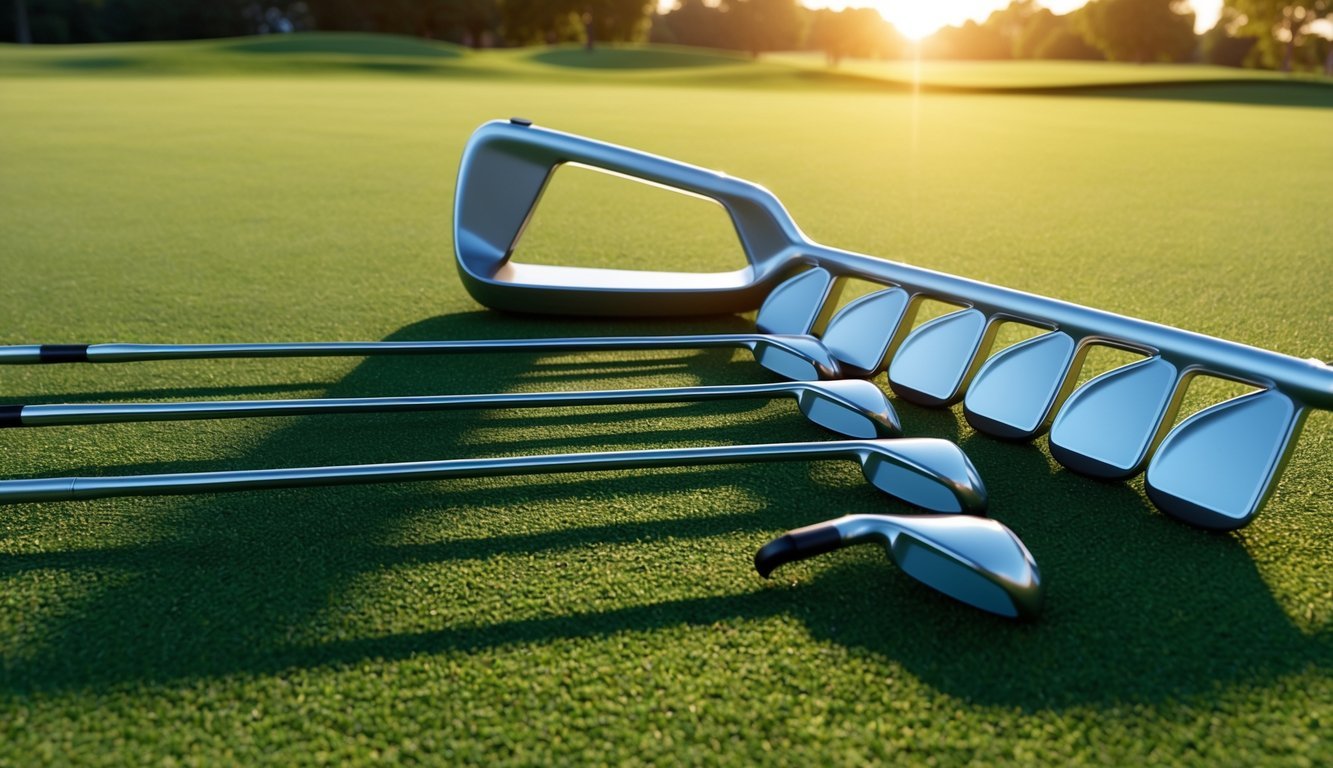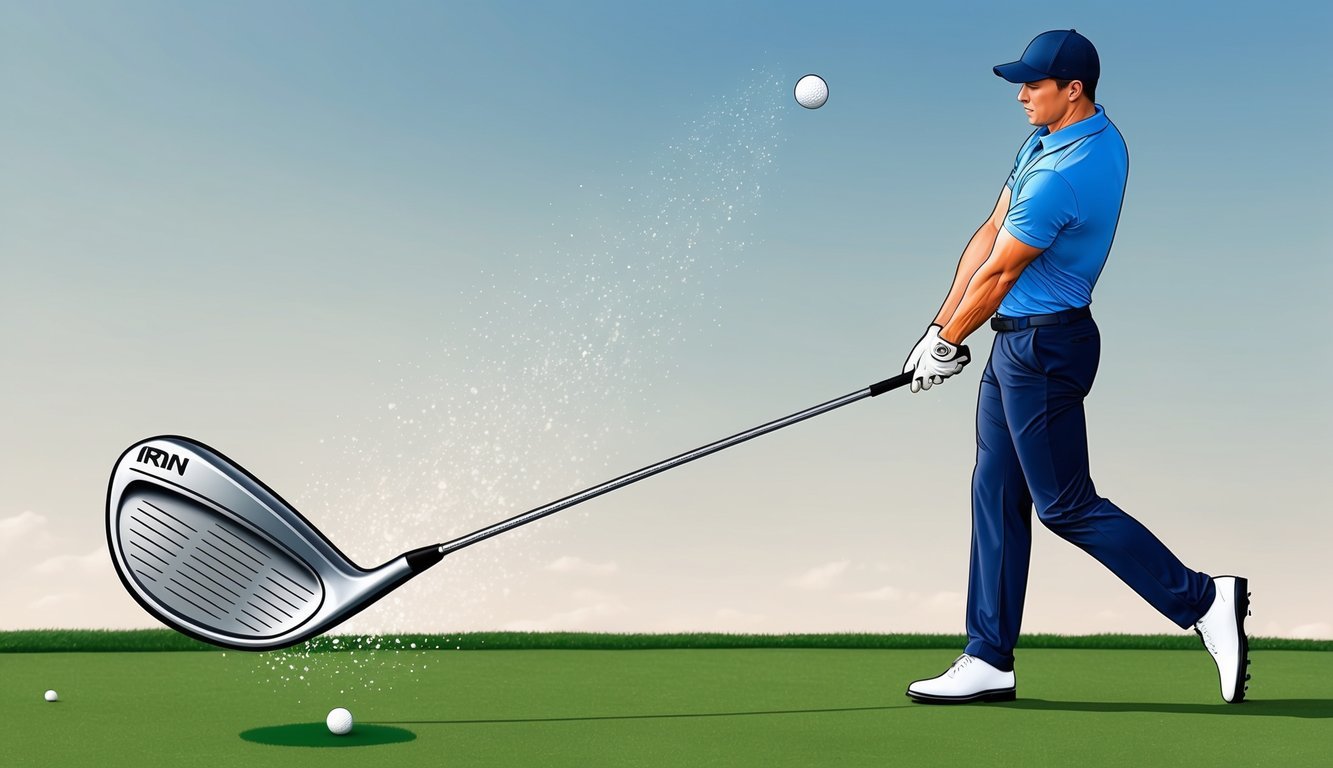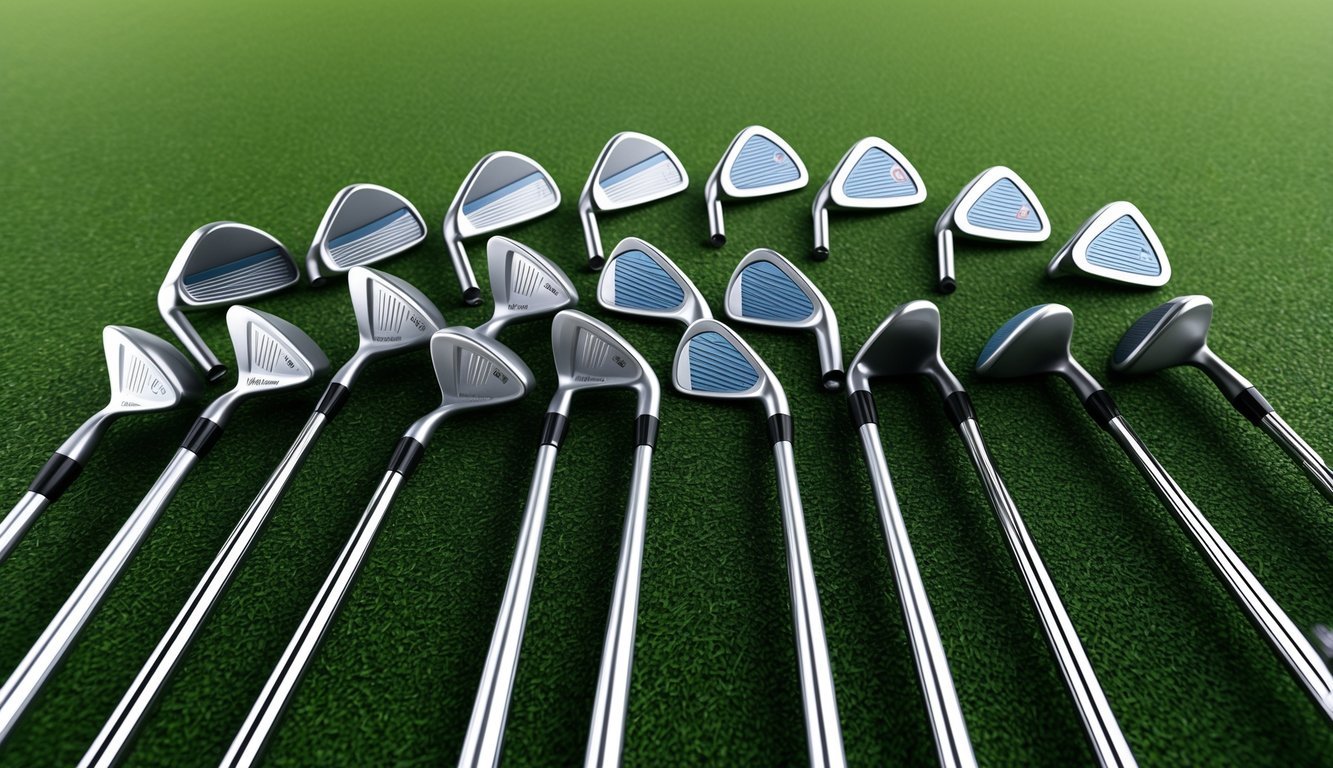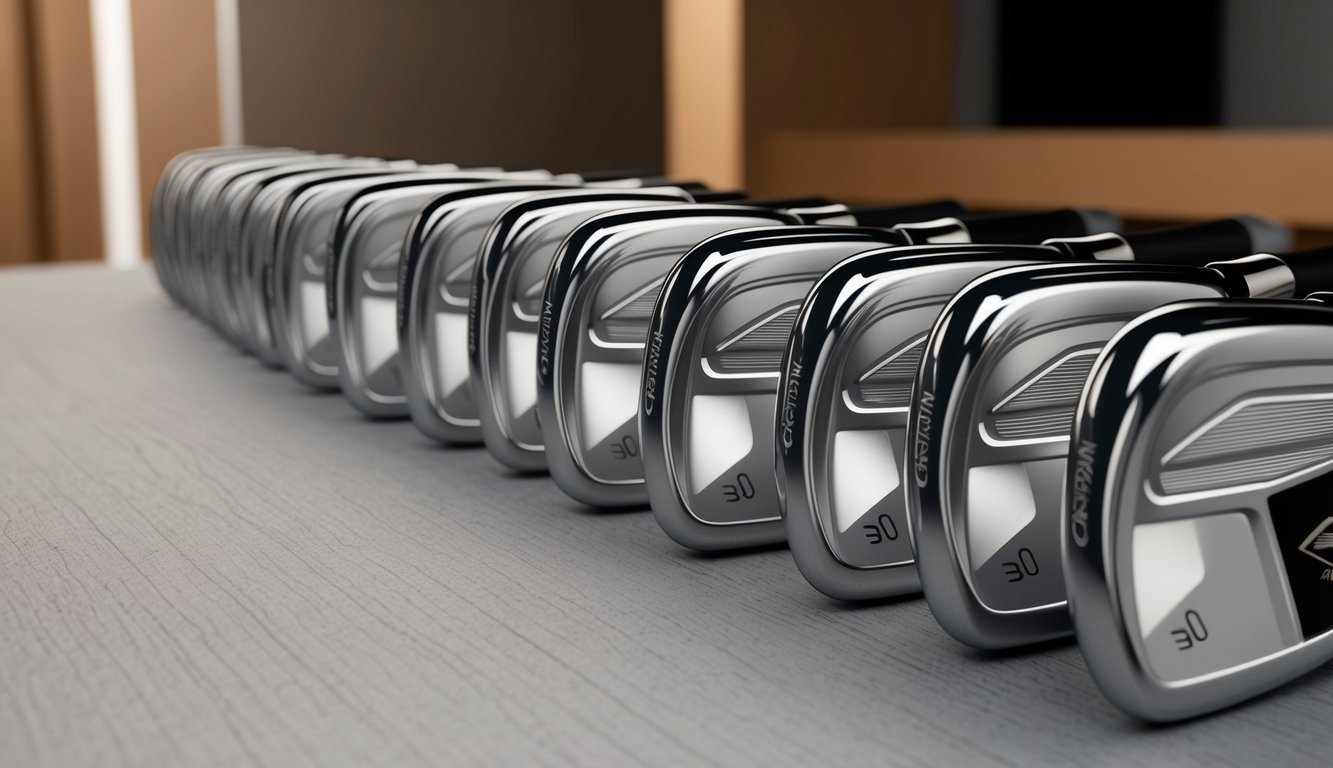Exploring the intricacies of golf clubs can significantly enhance your game.
Among the key elements, the loft of a club plays a crucial role in determining how the ball flies and lands. The standard iron lofts range from 20 degrees for a 3-iron to 41 degrees for a 9-iron, impacting both trajectory and distance.

Understanding standard iron lofts allows you to better select the appropriate club for each shot.
Different manufacturers might design clubs with slight variations, but knowing these fundamentals helps you adapt and make informed choices.
The loft can be a game-changer, especially if you’re looking to improve accuracy and control.
For golfers seeking practical advice, consider how the loft of your irons might influence your performance.
By aligning your equipment with your playing style and conditions, you’ll find yourself with better opportunities to lower your scores.
Key Takeaways
- Standard iron lofts affect ball flight and distance.
- Variations exist between different manufacturers.
- Correct club selection boosts accuracy and control.
Understanding Golf Club Lofts
Golf club lofts play a critical role in determining how far and how high your ball will travel.
Understanding these angles can help enhance your gameplay by allowing you to choose the right club for the right situation.
The Basics of Loft in Golf Clubs
Loft refers to the angle of the clubface relative to the ground, measured in degrees.
The angle impacts the trajectory and distance achieved with each shot.
A higher loft means the ball will ascend steeply and cover a shorter distance, while a lower loft results in a flatter, longer shot.
Golf clubs are designed with varying lofts to cover all possible scenarios during a game.
For instance, drivers often have a loft ranging from 8 to 10.5 degrees, while wedges can reach as much as 64 degrees.
By selecting clubs with different lofts, you can control both the angle and the distance of your shots.
Loft Degrees Explained
Each club in your bag has a specific loft degree designed for a particular shot distance and trajectory.
Drivers usually start the range with the least loft, creating long, low shots ideal for the initial drive.
Mid-range irons have lofts that allow for more controlled shots that target specific distances.
For example, a 3-iron typically has a loft of around 21 degrees, achieving more distance, whereas a 9-iron has approximately 44 degrees, allowing for higher shots that land quickly.
The loft degree is a vital component affecting your choice for each stroke.
Role of Loft in Ball Flight and Distance
The loft greatly influences ball flight, affecting not just distance but the height and spin of every shot.
When you strike a ball with a higher loft club, it will launch at a steep angle, suitable for clearing obstacles or landing softly on a green.
On the other hand, a lower loft club propels the ball at a shallow angle, leading to longer distances.
Understanding how loft affects ball flight can also help you manage playing conditions like wind.
A higher loft allows for better control and precision in adverse weather, while a lower loft is ideal for maximizing reach when conditions allow.
This knowledge empowers you to tailor your strategy for better results on the course.
Iron Lofts and Their Effect on Your Game

Understanding how the loft of your irons affects your game is crucial for improving shot accuracy and distance.
This section explores the typical lofts for irons, how they have changed over time, how to select the best loft based on your handicap, and how loft influences shot-making abilities.
Standard Lofts for Irons and Their Evolution
The evolution of iron lofts is significant in modern golf equipment.
Traditionally, a 7-iron had a loft of around 35º, while today, many have lofts as low as 29º.
This shift allows for longer shots but can affect control and spin.
In contrast, a 5-iron usually ranged around 28º to 31º, and now some models have lofts closer to 24º.
This trend toward stronger lofts aims to maximize distance, particularly in game improvement irons.
Players can hit the ball further with less effort.
However, it’s essential to balance distance with the ability to manage shot direction and stopping power on the greens.
Choosing the Right Iron Loft for Your Handicap
Selecting the appropriate loft for your handicap is vital.
Higher handicappers often benefit from stronger lofted irons.
These clubs can offer greater distance and forgiveness on off-center hits.
For example, a 6-iron with a lower loft might allow you to reach greens more easily.
Conversely, lower handicappers who prioritize accuracy and control may prefer more traditional lofts.
A 4-iron with a standard loft may provide ample control, allowing you to shape shots and manage spin better.
Tailoring your choice based on skill level and personal game objectives can enhance overall performance.
Impact of Iron Loft on Shot Making
Iron lofts directly influence your ability to make various shots.
Lower lofts generally result in lower ball trajectory and reduced spin.
This can be advantageous for achieving greater distance and piercing ball flights.
For instance, a 3-iron with a strong loft might cut through the wind more effectively.
However, stronger lofts can diminish your control over the ball’s stopping power on the greens.
This trade-off requires you to adjust your approach, especially in short iron play.
Emphasizing precision in your practice and learning how each loft affects spin and control can improve your consistency and shot-making abilities on the course.
Different Types of Golf Clubs

When you’re picking golf clubs, it’s important to consider how each type fits into your game.
Each club is designed for a specific purpose, influencing the distance and precision of your shots.
Comparing Woods, Hybrids, and Irons
Woods, hybrids, and irons are essential components of any golf set, each serving distinct functions. Woods, like the driver, are designed for long-distance shots.
They typically have larger clubheads and longer shafts.
Irons are more versatile, used for a variety of shots from both the fairway and rough.
You might find that the longer irons are more challenging to handle for amateurs, leading many players to use hybrids as alternatives. Hybrids combine the best features of woods and irons, offering the distance of a wood with the accuracy and control of an iron.
Specialty Wedges and Their Lofts
Wedges are crucial for the short game, emphasizing accuracy near the green. Pitching wedges (PW) often have lofts around 44-48 degrees, suitable for longer wedge shots.
Sand wedges (SW), typically lofted between 54-58 degrees, are perfect for bunker play.
The gap wedge (GW), bridging the gap between a pitching and sand wedge, usually features a loft around 50-54 degrees.
Finally, the lob wedge (LW), with a loft of about 58-64 degrees, excels in hitting high, short shots that drop softly onto the green.
Knowing wedge loft is essential to improve your approach shots and lowering your score.
How to Select Clubs for Your Set
Selecting clubs is about matching your skill level and playing style.
Beginners might need a driver with a higher loft for better control.
An assortment of irons should include short, mid, and long irons, while swapping some for hybrids can enhance playability.
Additionally, include wedges covering various lofts for versatility around the green.
A 3 hybrid can replace more challenging long irons like the 3 or 4 iron.
Experiment with different clubs to find those that suit your game, and remember, club manufacturers offer various models designed to meet diverse skill sets.
If you buy a set, make sure it’s tailored to your needs, including the right combination of woods, irons, hybrids, and wedges for your play style.
Manufacturers and Club Design

Golf club manufacturers have played a pivotal role in shaping modern iron lofts, responding to golfer demand for distance and performance.
This has led to significant changes in club design, offering both customization options and new technologies that cater to individual playing styles.
Influence of Manufacturers on Club Lofts
Manufacturers like Titleist, Callaway, and TaylorMade have been influential in adjusting the lofts of golf clubs over the years.
Their aim is to enhance distance while maintaining control, leading to the trend of stronger lofts.
Compare the traditional lofts associated with players like Tiger Woods to the modern adjustments, and you’ll notice how manufacturers focus on performance needs.
Using a golf club loft chart, you can see these changes vividly as pitching wedges and 7-iron lofts have shifted over time.
Custom Golf Club Options
The trend towards customized golf clubs is also significant.
Many golfers, including renowned players such as Phil Mickelson and Bryson DeChambeau, prefer custom settings to suit their specific playing style and preferences.
Customization can include altering loft settings, shaft length, and grip type.
Being aware of your unique swing and how different clubs affect your play allows you to tailor your equipment for maximum performance.
This personalized approach gives you enhanced control and feel on the course.
Technological Advancements in Club Design
Technological advancements have greatly influenced golf club design.
Materials like titanium and carbon fiber are now commonly used, making clubs lighter and more forgiving.
Features like adjustable hosels allow you to tweak loft and lie angles easily to match your swing.
As a result, technological innovations have allowed you to hit longer and straighter shots with less effort.
Practical Tips for Golfers
Choosing the right golf club lofts can significantly impact your game.
Adapting your swing technique, coupled with targeted practice drills, is essential for optimizing your performance on the course.
Adjusting Your Swing for Different Lofts
When dealing with varying lofts, adjusting your swing is key.
Lower lofts, like those found in drivers and long irons, require a faster swing speed to achieve distance.
Ensuring the face of the club meets the ball squarely helps maintain accuracy.
For short irons and wedges, focus on control and precision over sheer power.
Concentrate on your stroke, adjusting your grip to accommodate the higher loft.
This aids in controlling the spin rate and keeping the ball on target.
Monitoring your lie angle can further refine your shots.
Practicing different swing speeds can help in adapting to various clubs.
Understanding how your hybrid loft and wedge lofts affect ball flight will enable you to make more informed decisions on the course.
Practice Drills for Better Club Understanding
Engaging in structured practice drills is a great way to acquaint yourself with different club characteristics.
Begin with a drill focusing on hitting targets with your short irons, stressing accuracy over distance.
Establish checkpoints to consistently check your clubface at impact.
Another effective drill includes alternating between different clubs, such as using a driver and a hybrid loft back-to-back.
This exercise challenges you to adjust your swing and stroke fluidly, enhancing your adaptability on the course.
Incorporate lie angle assessments during practice to ensure your equipment suits your swing style.
Better players often engage in these focused drills to fine-tune their game and build a deeper understanding of how club lofts impact their play.

